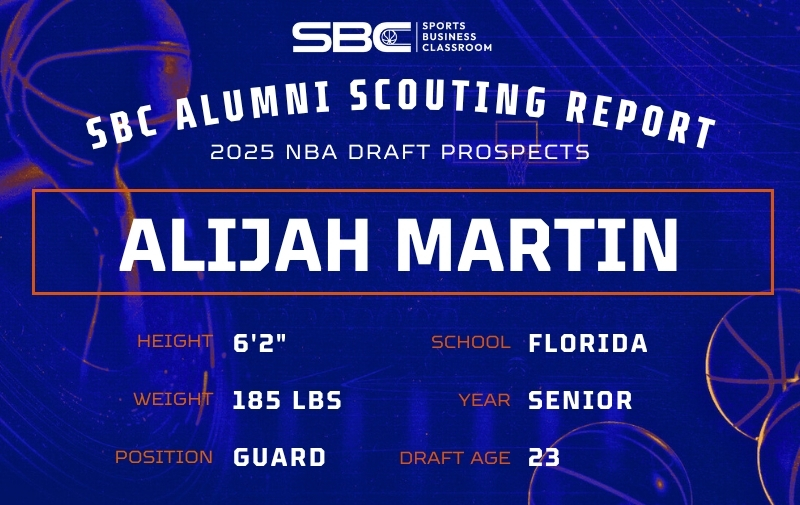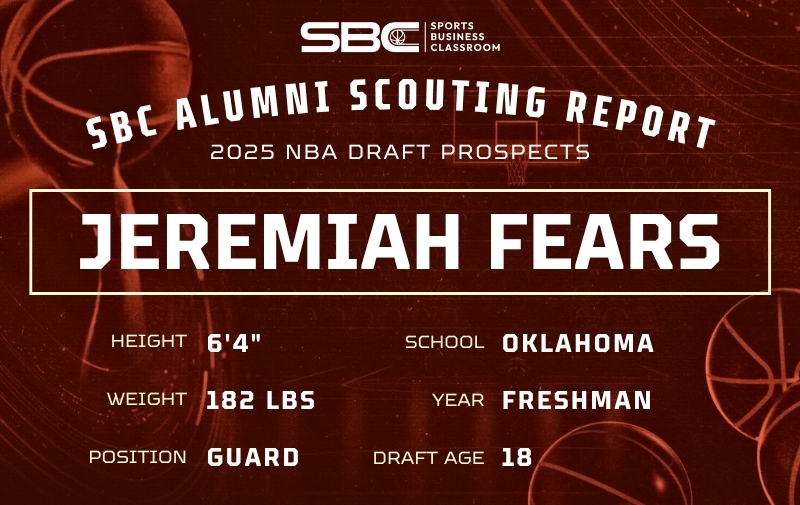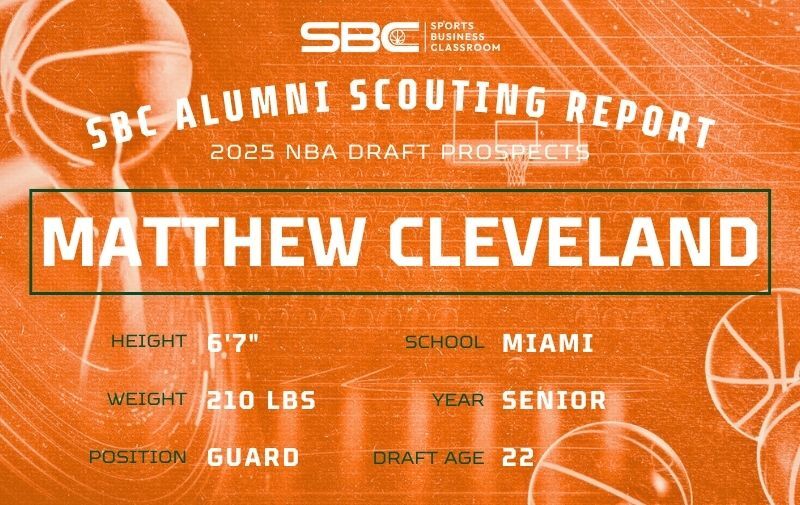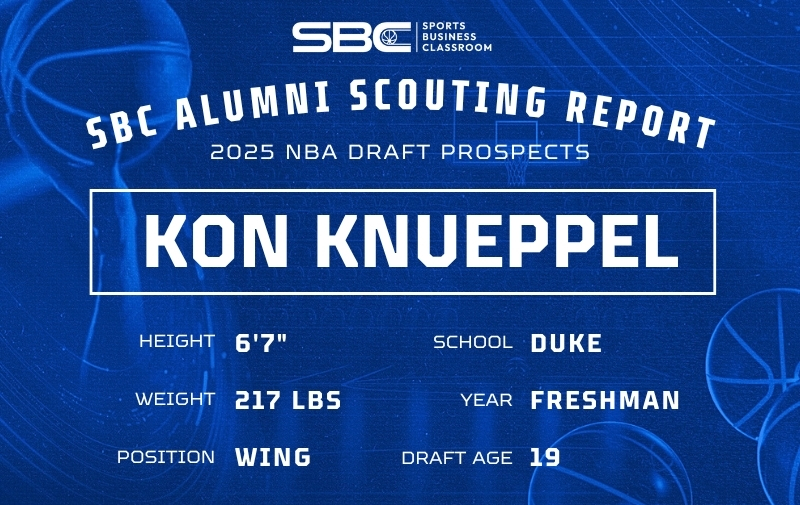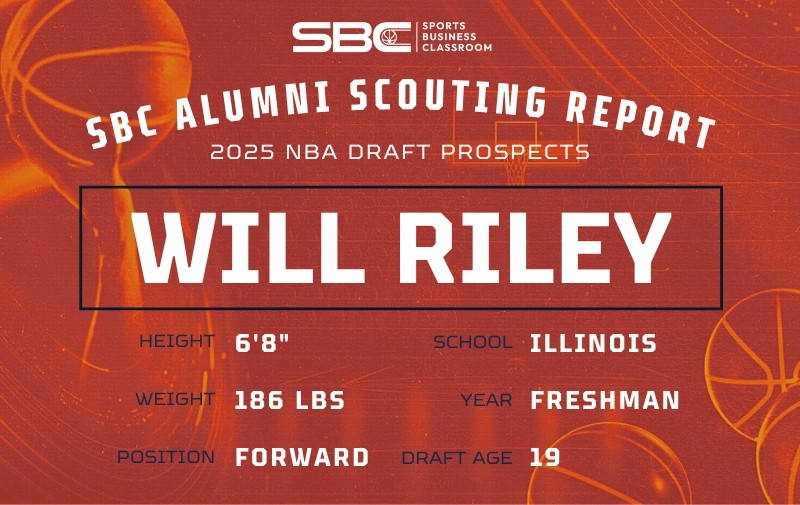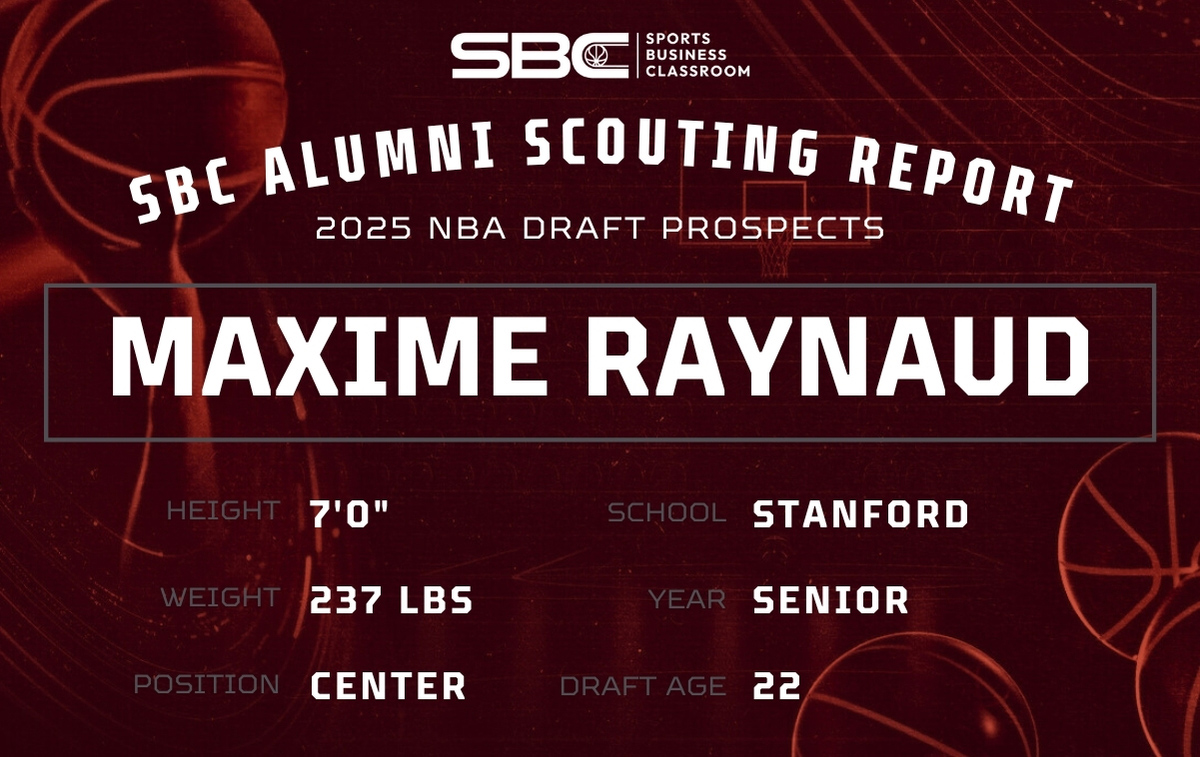
[The following scouting report is part of a series on potential 2025 draft prospects from Sports Business Classroom alumni.]
Maxime Raynaud
Frame: 7’1″, 237 lbs
Position: Center
Team: Stanford Cardinals
2025 Draft Age: 22
Offense
In an era where shooting big men have become hot commodities, Raynaud is still somehow still flying under the radar. As the NCAA’s premier shooting big and third-leading scorer, Raynaud has come a long way and made significant strides in his four seasons. As a freshman, he played in 29 games, averaging only 12 minutes per contest, but has since seen his role progressively grow until becoming the Cardinal’s top option last year. In his senior season, he averaged 20.2 points, led the ACC with 10.6 rebounds, and made 34.7 of his 5.5 three-point attempts per game. Raynaud isn’t a one-trick pony either: he’s a capable three-level scorer who boasts a 31.5% usage rate. In the preseason, Stanford was projected to be a bottom team in the conference, but finished seventh instead due to Raynaud’s ability to carry the offense.
When Maxime arrived from France, he was primarily a post scorer who could hit the occasional outside shot. However, he has since greatly expanded his game. Still very skilled with his back to the basket, Raynaud can score effectively with either hand, making him a threat from either side of the rim: an underrated skill. He has a great touch on his hook shots and consistently displays fundamental footwork to create space for himself. Opponents knew this was a primary point of emphasis for Stanford’s offense, so they often clogged the paint—where his jumpshot became extremely useful because not only did he hit a respectable rate of his three-point attempts, but he also saw roughly 20 percent of his shot attempts come from the midrange (94th percentile).
Although he only hit 30 percent of his midrange attempts, having a center capable of taking that shot is valuable against man coverage in pick–and-pop situations and can prove to be a zone breaker.. Plus, it is even more impressive that he was as efficient as scoring from the field when he had such a difficult shot diet. Regarding his three-point attempts, a vast majority came from above the break while only 3.2 percent were from the corner.
Defense
Scouts’ primary concerns regarding Raynaud’s transition to the NBA stem from his ability on the defensive side of the ball. Although he’s a true seven-footer, he doesn’t block a significant number of shots and fails to be an impactful rim deterrent in general. His lack of strength also contributes to his being bullied by broader bigs, which he must improve upon to see regular minutes against NBA-caliber centers.
Still, Raynaud is a better athlete than given credit for. He’s pretty quick for his size and has flashed some serious bounce on some lobs thrown his way. That athleticism can also translate to the defensive side if he can improve his shot-contest timing. Also, it’s worth highlighting that he had the lowest foul rate of his collegiate career last season, improving to a career best 3.6 fouls per 100 possessions. It’s a nice sign that he’s maturing on the defensive end because blocking shots is not the exclusive metric to a center’s defensive impact: avoiding foul trouble to stay on the floor can be just as, if not more important than, actually blocking shots.
Looking Ahead
For a significant portion of the year, Raynaud was projected to be a second-round talent, but mainstream scouts are finally coming around on the fact that he’s worthy of a first-round pick. A true seven-foot center capable of scoring from three levels at a high volume with efficiency has a legit chance of spending over a decade in the NBA and thus is worthy of lottery consideration.
The development he’s shown in his game over the last four seasons is what you hope to see out of a senior-year prospect as proof that he is still growing as a player. Just this last season, Raynaud began displaying the ability to take defenders off the dribble, which will be huge if he continues to improve. He also stood out at the combine and proved he was a tier above the rest of the projected second-round prospects.
Raynaud seems very intelligent: he regularly plays chess with childhood friend Victor Wembanyama and also learned English after moving to the US at 18 years old. For whatever team drafts him, they should aim to get him more at the rim twos and above the break threes instead of a significant portion of his shots coming from the midrange. NBA spacing should provide him with more room to operate in the paint, better three-point looks from above the break and also more opportunities to make the extra pass to open teammates. Although Raynaud may not take the floor for an All-Star game, he will likely become an impactful player for a winning team for many years.


